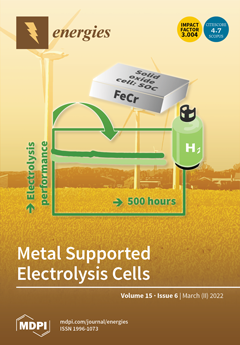Metal hydroxides, owing to their catalytic active sites for the decomposition of O
3 to Reactive Oxygen Species (ROS), have been adapted for catalytic ozonation of micropollutants in wastewater. In this study, commercial Mg (OH)
2 was used for the degradation of cyclophosphamide
[...] Read more.
Metal hydroxides, owing to their catalytic active sites for the decomposition of O
3 to Reactive Oxygen Species (ROS), have been adapted for catalytic ozonation of micropollutants in wastewater. In this study, commercial Mg (OH)
2 was used for the degradation of cyclophosphamide (CYP) by ozone. The crystal phase was confirmed by X-ray powder Diffraction (XRD). Percent degradation of 10 ppm CYP after 30 min by O
3 and Mg (OH)
2/O
3 was 56 and 93, respectively, suggesting enhanced decomposition of O
3 to ROS by the catalyst. The presence of ROS was further confirmed using pCBA as a probe, which showed that the concentration of ROS was eight times higher in the presence of Mg (OH)
2/O
3 than O
3 alone. Catalytic ozonation experiments in the presence of scavengers showed that OH· radicals play a significant role in the degradation of CYP. The catalyst was found to be reusable for at least three cycles without significant loss in degradation efficiency. To study the compatibility of Mg (OH)
2 for wastewater treatment applications, synthetic effluent was spiked with CYP and subjected to ozonation by Mg(OH)
2/O
3. The TOC of CYP before and after the treatment showed that Mg (OH)
2/O
3 not only degrades CYP but also mineralizes to a certain extent unlike O
3 alone.
Full article





